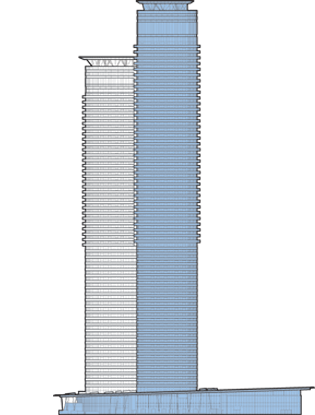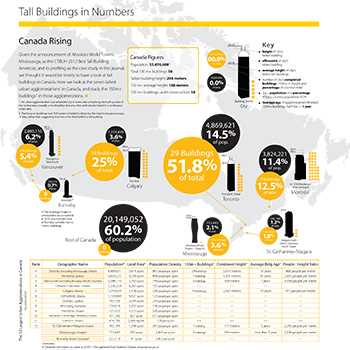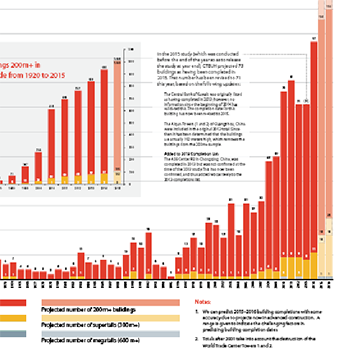Filter by
You must be a CTBUH Member to view this resource.

ÏCE Condominiums at York Centre
Complex
Completed
residential
architectsAlliance
1,343
688
89,000 m² / 957,988 ft²
Note: Only buildings that have GPS coordinates recorded are displayed.
|
RANK
|
Name
|
Completion
|
Height
|
Floors
|
Function
|
|---|---|---|---|---|---|
| 1 | ÏCE Condominiums at York Centre 2 | 2015 |
234 m / 768 ft |
67 | Residential |
| 2 | ÏCE Condominiums at York Centre 1 | 2014 |
202 m / 664 ft |
57 | Residential |
29 January 2015 - Event
31 December 2014 - CTBUH Journal

18 October 2016
This presentation was intended to introduce the upcoming CTBUH technical guide titled "The Space Between," which investigates the importance of publicly accessible spaces surrounding tall...

01 December 2012
CTBUH Research
Twenty-six buildings taller than 150 meters have been built in Canada since 2005 and it added four buildings taller than 200 meters in 2012, the...

01 December 2012
CTBUH Research
Twenty-six buildings taller than 150 meters have been built in Canada since 2005 and it added four buildings taller than 200 meters in 2012, the...

31 December 2014
Daniel Safarik, Antony Wood, Marty Carver & Marshall Gerometta, CTBUH
An All-Time Record 97 Buildings of 200 Meters or Higher Completed in 2014 and 2014 showed further shifts towards Asia, and also surprising developments in...
29 January 2015
The new CTBUH Urban Habitat / Urban Design Committee organized a highly successful Winter Spaces Walking Tour in seven cities around the world.
31 December 2014
An All-Time Record 97 Buildings of 200 Meters or Higher Completed in 2014 and 2014 showed further shifts towards Asia, and also surprising developments in building functions and structural materials.
19 November 2014
The CTBUH Canada chapter hosted a tour – ironically during an early winter snow storm – of the ICE Condominiums.
Subscribe below to receive periodic updates from CTBUH on the latest Tall Building and Urban news and CTBUH initiatives, including our monthly newsletter. Fields with a red asterisk (*) next to them are required.
View our privacy policy